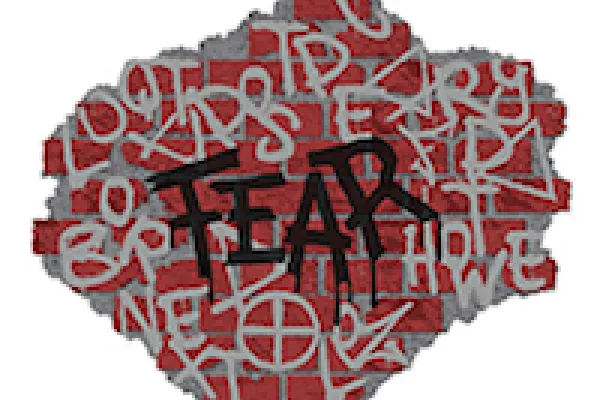Fear (2019–20)

Published April 27, 2020
Project Description
On the eve of the 2016 presidential election, an influential Rolling Stone article concluded that we were living in “An Age of Fear.” Author Neill Strauss was bemused by this, noting that by most measures, “around the globe household wealth, longevity and education are on the rise, while violent crime and extreme poverty are down.” So why is fear so widespread? How does it shape personal behavior and public policy? The stakes in these inquiries are high, because what we call “fear” is so easily triggered and manipulated. As sociologist Barry Glassner argues, “we are living in the most fear-mongering time in human history.”
Fear is a necessary biological defense mechanism, protecting against real threats. But because fear often overwhelms reason, diminishes compassion, and cultivates division, it has obvious social effects, too. There are compelling correlations between fear and a susceptibility to authoritarianism. But fear also has activating properties, not least in propelling efforts to understand how the natural world works in order to address threats ranging from climate change to extinctions. This yearlong Kahn project aims to address the power of fear--to destroy and subvert, but also to create. What is fear? Who benefits from fear? Who promotes it, and why and how? What are the hidden costs? What are the alternatives? How is a culture of fear viewed through different lenses? How does fear figure into current events on campus, in the U.S., and worldwide?
Fear of traumatic memories or even uncomfortable discussions in college classes leads to calls for trigger warnings. Fear of terrorists leads to massive wars; fear of foreigners to razor wire-topped walls and widespread abuse and discrimination. Fear of the dark leads to light pollution. Fears of climate change, resource exhaustions, species extinctions, and perhaps even human life itself inspire technological innovation, bio-engineering, and the building of underground shelters, as well as political activism and artistic production.
This is a topic that cries out for collaboration: among neuroscientists and biologists (who study the fear centers of the brain, the amygdala), psychologists (who study trauma and emotions), political scientists (who study the manipulation of fears for political ends), economists (who study the monetization of fear in advertising and marketing), media studies scholars (who study the political and social effects of 24-hour news cycles, talk radio, and attention-grabbing smart phone feeds), historians, anthropologists and sociologists (who show how fears have been mobilized and manipulated in different times and places), scientists (addressing climate change, diseases, extinctions), philosophers and cultural critics (who examine the meanings and desires involved in representations of fear; after all, we are also talking about the pleasures and anxieties that draw audiences to suspense thrillers, horror movies, comedy, and even soap operas).
Project Fellows
- Nina Maxine Gunther-Segal '21J, Sociology
- Ambreen Hai, English Language and Literature
- Lane Hall-Witt, American Studies
- Amanda Jiang '20, Psychology
- Emma Kelley '20, Biological Studies
- Patience Kayira '20, English Language and Literature
- Gillian Kendall, English Language and Literature
- Mieko Kuramoto '20, Spanish, American Studies
- James Lowenthal, Astronomy, Organizing Fellow
- Mehammed Mack, French Studies
- Josh Miller, School for Social Work
- Elizabeth Pryor, History
- Timothy Recuber, Sociology
- Andrea Rossi-Reder, Class Deans Office
- Ninette Rothmueller, Dance
- Kevin Rozario, American Studies, Organizing Fellow
- Katy Schneider, Art
- Laura Sizer, School of Cognitive Science, Hampshire College
- Camille Washington-Ottombre, Environmental Science & Policy